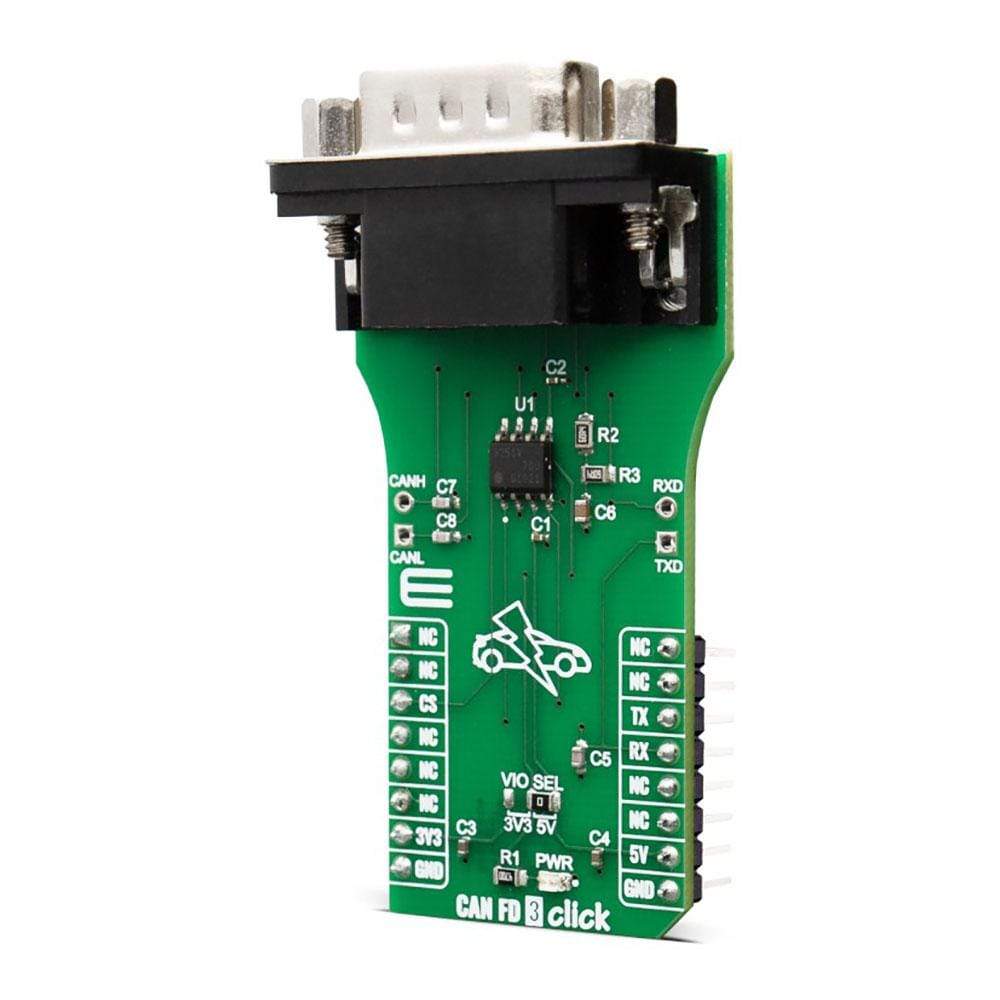
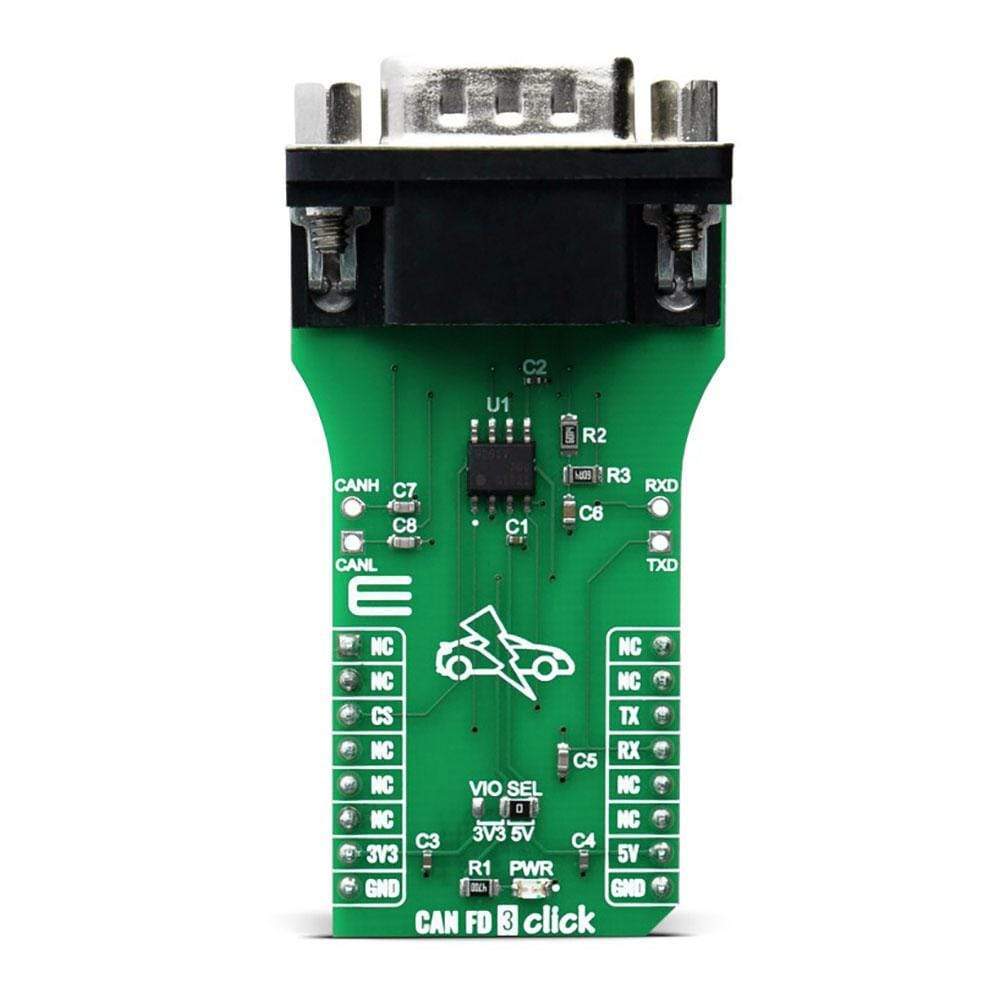

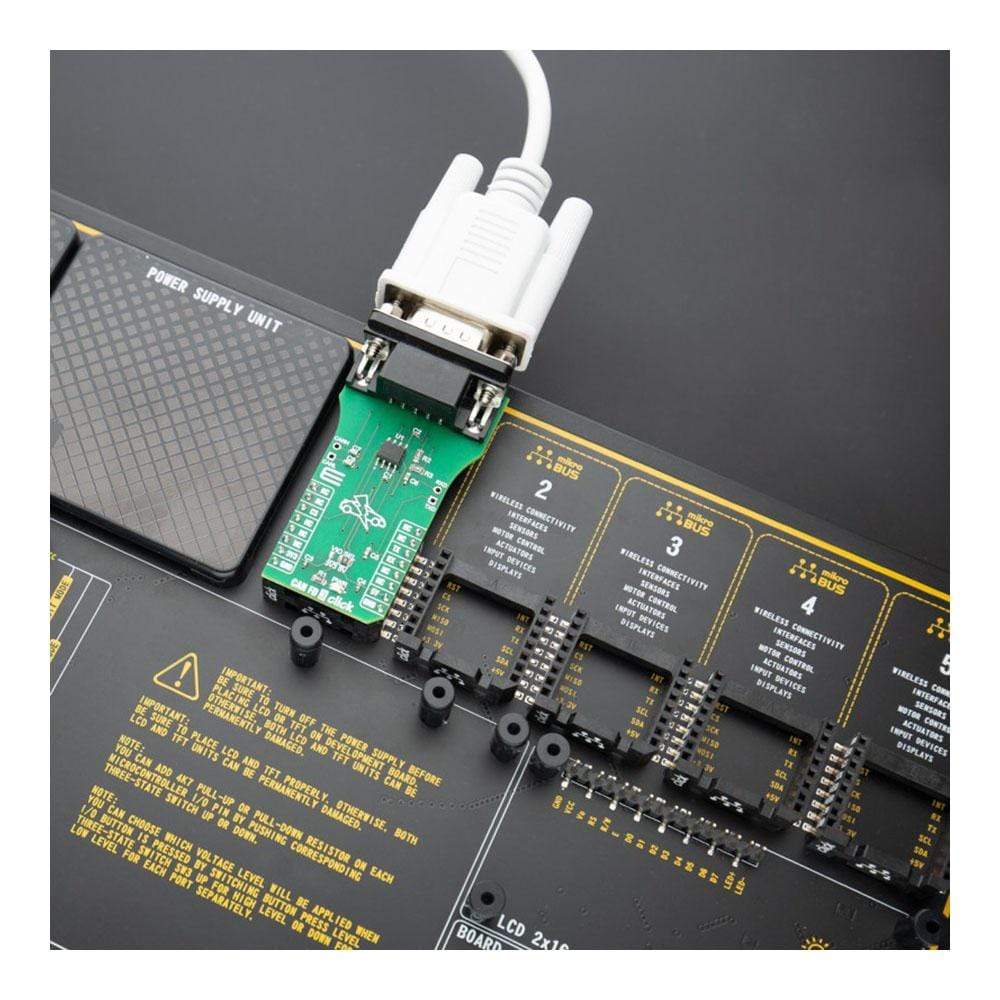
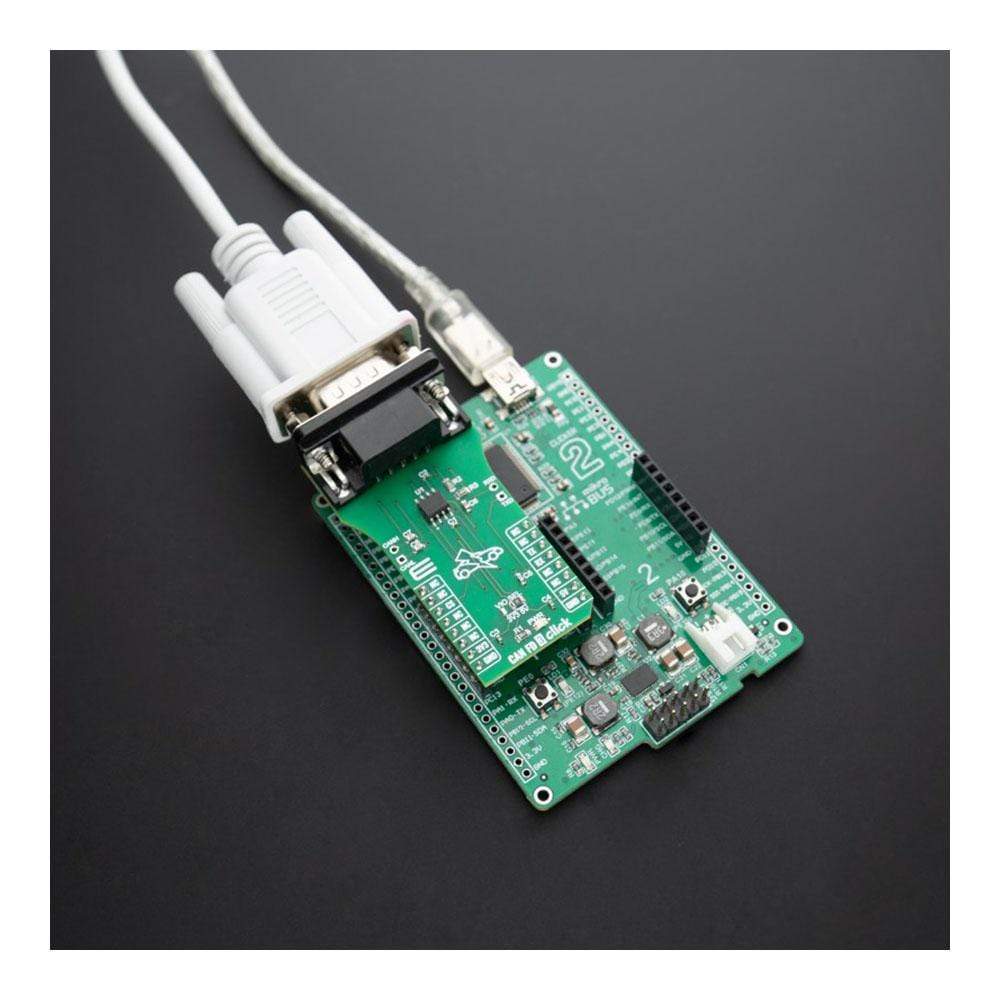
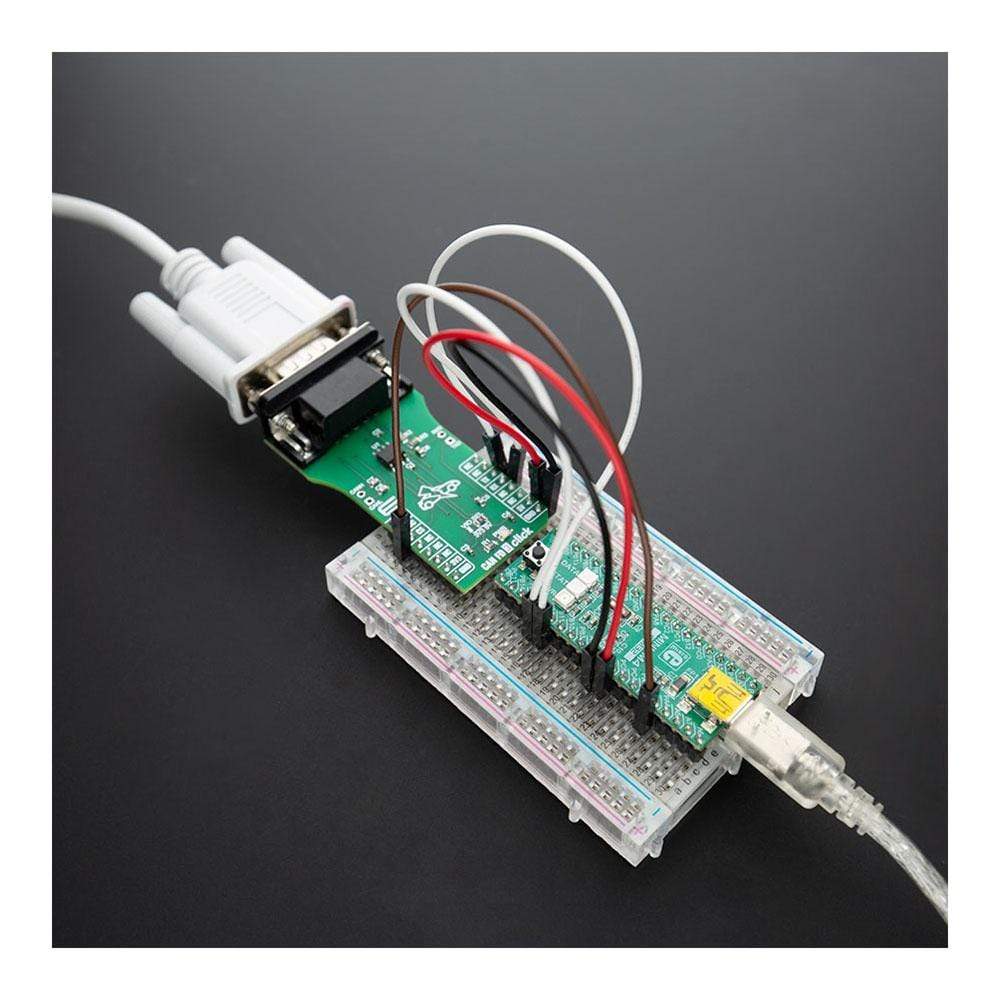
Overview
The CAN FD 3 Click Board™ is an add-on board based on TLE9251V CAN network transceiver, designed for HS CAN network up to 5 Mbit/s in automotive and industrial applications. As an interface between the physical bus layer and the CAN protocol controller, the TLE9251V drives the signals to the bus and protects the microcontroller against interferences generated within the network. Given all the features its components offer, the CAN FD Click is best used for infotainment applications, gateway modules, body control modules (BCM) or engine control units (ECUs).
The CAN FD 3 Click Board™ is supported by a mikroSDK compliant library, which includes functions that simplify software development. This Click Board™ comes as a fully tested product, ready to be used on a system equipped with the mikroBUS™ socket.
Downloads
Das CAN FD 3 Click Board™ ist eine Zusatzplatine basierend auf dem TLE9251V CAN-Netzwerk-Transceiver, die für HS CAN-Netzwerke mit bis zu 5 Mbit/s in Automobil- und Industrieanwendungen entwickelt wurde. Als Schnittstelle zwischen der physischen Busschicht und dem CAN-Protokollcontroller überträgt das TLE9251V die Signale an den Bus und schützt den Mikrocontroller vor Störungen, die im Netzwerk entstehen. Angesichts aller Funktionen, die seine Komponenten bieten, eignet sich das CAN FD Click am besten für Infotainment-Anwendungen, Gateway-Module, Karosseriesteuergeräte (BCM) oder Motorsteuergeräte (ECUs).
Das CAN FD 3 Click Board™ wird von einer mikroSDK-kompatiblen Bibliothek unterstützt, die Funktionen enthält, die die Softwareentwicklung vereinfachen. Dieses Click Board™ wird als vollständig getestetes Produkt geliefert und ist bereit für den Einsatz auf einem System, das mit der mikroBUS™-Buchse ausgestattet ist.
| General Information | |
|---|---|
Part Number (SKU) |
MIKROE-3992
|
Manufacturer |
|
| Physical and Mechanical | |
Weight |
0.026 kg
|
| Other | |
Country of Origin |
|
HS Code Customs Tariff code
|
|
EAN |
8606018718436
|
Warranty |
|
Frequently Asked Questions
Have a Question?
Be the first to ask a question about this.






